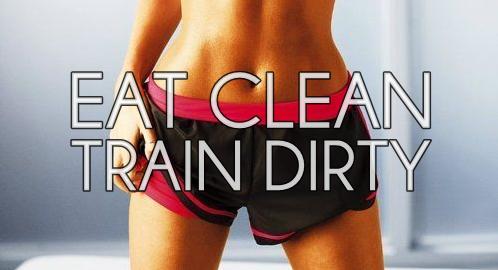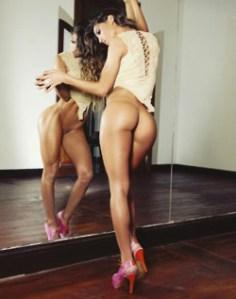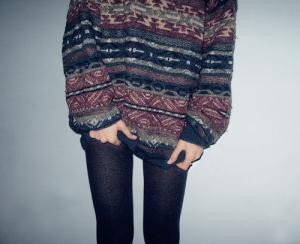
Can’t I just exercise regularly and eat healthy?
- Health and Exercise as a trend, not as a fundamental
It’s that simple – if you use the hashtag “clean eating”, you will have the body of your dreams in a matter of photo ‘likes’! “WOW, tell me more!”, you exclaim. If you really want to maximise your “eating clean, training mean” experience, buy some fluoro nike runners and Lorna Jane attire and take a mirror selfie – remember, this is an integral part of health and exercise.
It begs the age old question; Did one really go to the gym if one did not ‘check-in’ on Facebook?
The persistent use of the phrase “eat clean, train mean” fills me less with inspiration, more with the motivation to snort some protein powder instead of putting it in a calorific thick-shake. The visual, interactive circulation of the #CleanEating and #EatCleanTrainMean (and all the other image-based trends that come with them) trivialises the idea that we should eat healthy and exercise regularly – turning it into something novel – and shifts the focus of the concept into a more aesthetic pursuit. You ate salmon and veggies for dinner? Congratulations – Instagram it or it never happened! I eat veggies and lean protein every night but you don’t see my Instagram feed filled with images of my din-dins (granted, you will see a lot of cats so enter at your own risk).
However, this trend – while annoying and possibly damaging to one’s self esteem – is just a mere blemish in comparison to the dystopia of image-obsession trends in social media. This whole “eat clean, train mean” fad is no more than the Dukan diet, or Atkins diet and whathaveyou. It’s something that makes its followers feel entitled to have a “good” body – and that is a whole can of worms itself.

Found this in the “eat clean, train mean” section… makes sense.
- Meet your new friends, Ana and Mia
Every now and then I peruse depths of Instagram I wouldn’t usually associate myself with. I remember clicking on a “clean eating” hashtag and seeing where it took me – to a dysmorphic realm of other hash tags like “fitsporation”, “follow back”, “motivation” et cetera. Intrigued, I delved deeper into the dark, trend-set ways of Instagram and waded into the “fitsporation” feed. Nothing too alarming, just pictures of people and their made-up faces, claiming they’re “about to go for a run!”. Running is not an event that needs to be lead up to by taking pictures of yourself. I run first thing in the morning nearly everyday, so my pre-run face is actually almost worst than my post-run face. Also, exercise and moderately healthy eating are ways of life, not trends that need to be documented through truth-blinding filters and selfies.
When you’re in the thick of these kinds of trends, you start to notice other recurring hashtags: “fitspo, thinspo, thinspiration”. I’ve heard the phrase thinspiration before and I believe it speaks for itself – but let me explain it to you: Thinspiration is a “utopia” of inspiring images to help (mainly young girls) lose weight – body dysmorphia ensues. #Thinspiration is the dregs, because you’ll see other hashtags like “skinny”, “weight loss”, “collar bones”, or what’s worse, “#cutting”. That’s not all, though. You’ll see images that are just some Helvetica typeface scrawled across a black and white Tumblr picture saying things like “Skip Dinner, Wake Up Thinner”, and the image is usually a white girl’s emaciated legs, collar bones, or hip bones – any kind of bones, really. I remember seeing the hashtags #Ana and #Mia, and I ignored them despite my curiosity. The two words kept popping up as I lurked deeper into the “thinspo” feeds. My first assumption is that Ana and Mia were super skinny Russian ballet dancers, or famous skinny women. I should have noticed sooner, but I finally realised that “Ana” represented anorexia and “Mia” was code for bulimia – and these girls on Instagram all wanted to befriend Ana and Mia. Some users wished Ana and Mia would stop bothering them, but the more disturbing posts were people who said “I miss Ana, I miss my hip-bones jutting out” et cetera.
More disturbingly, these images are intertwined with photographs of wrists being cut with a razor-blade, or other methods of self harm.
A few months later I went back to this all-access pass into a utopia of pro-eating disorders to see if any of the trends had changed. However, when I clicked on the hashtag “Ana”, a message from Instagram popped up, saying: “Please be advised: These images may contain graphic content. For information and support with eating disorders, visit: nationaleatingdisorders.org”. When the message popped up, I was pleasantly surprised and relieved to see that Instagram had noticed the kind of image-obsessed culture it was (ironically) feeding. On the other hand, Instagram isn’t helping in any way because most people will most likely dismiss the cautionary message and dive into a dark ocean of collar-bones, razor-blades, and depressing motivational quotes, like Kate Moss’s famous “Nothing tastes as good as skinny feels”. To that I shall quote Liz Lemon (AKA Tina Fey): “I don’t know, have you ever put a doughnut in the microwave?”

#thinspo? (yeugh)

